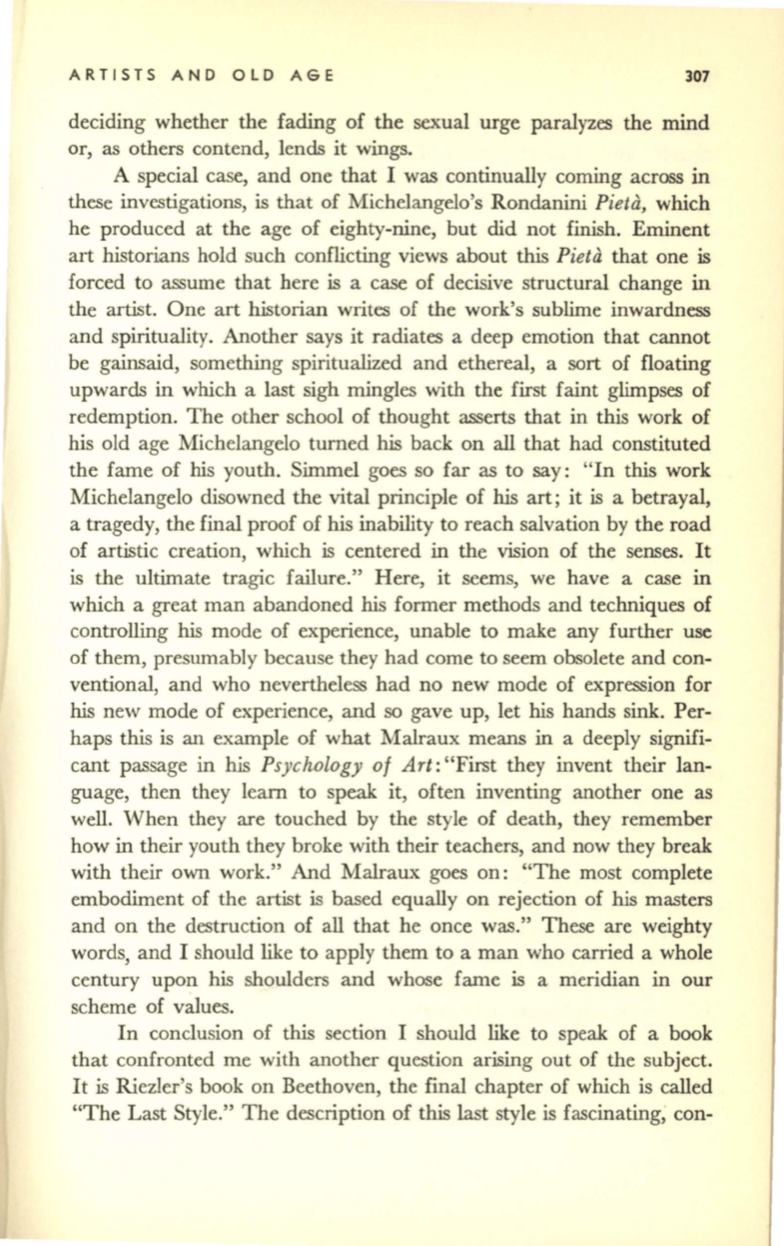
ARTISTS AND OLD AGE
307
deciding whether the fading of the sexual urge paralyzes the mind
or, as others contend, lends it wings.
A special case, and one that I was continually coming across in
these investigations, is that of Michelangelo's Rondanini
Piela,
which
he produced at the age of eighty-nine, but did not finish. Eminent
art historians hold such conflicting views about this
Piela
that one is
forced to assume that here is a case of decisive structural change in
the artist. One art historian writes of the work's sublime inwardness
and spirituality. Another says it radiates a deep emotion that cannot
be gainsaid, something spiritualized and ethereal, a sort of floating
upwards in which a last sigh mingles with the first faint glimpses of
redemption. The other school of thought asserts that in this work of
his old age Michelangelo turned his back on all that had constituted
the fame of his youth. Simmel goes so far as to say: "In this work
Michelangelo disowned the vital principle of his art; it is a betrayal,
a tragedy, the final proof of his inability to reach salvation by the road
of artistic creation, which is centered in the vision of the senses. It
is
the ultimate tragic failure." Here,
it
seems, we have a case in
which a great man abandoned his former methods and techniques of
controlling his mode of experience, unable to make any further use
of them, presumably because they had come to seem obsolete and con–
ventional, and who nevertheless had no new mode of expression for
his
new mode of experience, and so gave up, let his hands sink. Per–
haps this is an example of what Malraux means in a deeply signifi–
cant passage in his
Psychology of
Arl:
"First they invent their lan–
guage, then they learn to speak it, often inventing another one as
well. When they are touched by the style of death, they remember
how in their youth they broke with their teachers, and now they break
with their own work." And Malraux goes on: "The most complete
embodiment of the artist is based equally on rejection of his masters
and on the destruction of all that he once was." These are weighty
words, and I should like to apply them to a man who carried a whole
century upon his shoulders and whose fame is a meridian in our
scheme of values.
In conclusion of this section I should like to speak of a book
that confronted me with another question arising out of the subject.
It is Riezler's book on Beethoven, the final chapter of which is called
"The Last Style." The description of this last style is fascinating; con-


